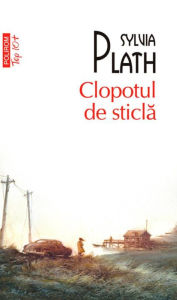"I was supposed to be having the time of my life," Sylvia Plath writes as her alter ego Esther Greenwood in The Bell Jar. Like Esther, Plath was a bright young woman who had earned scholarships and awards, and had all the talent to back them up, and saw this—but could never enjoy it. Her struggles with depression were in fact what often motivated her to write, until she committed suicide at age 30 in 1963.
Plath is among the best-known confessional poets, coming from a school (at its peak in the `50s and `60s) that left few stones unturned when it came to self-examination and revelation. Though not always bald or literal in her expression, Plath chronicled her flirtation with death—and with life—in her poems. She writes in "Lady Lazarus," a verse about a woman rising from the dead yet again, "Dying/Is an art, like everything else./I do it exceptionally well./I do it so it feels like hell./I do it so it feels real./I guess you could say I've a call." She has an ability to convey deep, almost frightening emotion, but do it in a deceptively lilting, almost-but-not-quite humorous language.
"Lady Lazarus" was published in Ariel (1965), a collection that appeared posthumously, as did other well-known collections such as Crossing the Water (1971), Winter Trees (1972) and Collected Poems (1981), for which Plath was awarded the Pulitzer. Though not all death and despair, Ariel stands out among Plath's works because it represented a departure from the first collection that was published while she was still alive, The Colossus and Other Poems, but primarily because it was such an intimate record of the end of her life. As poet Bob Hass remarked in a PBS interview, "Readers in general discovered this book [Ariel] of a young woman with two babies, whose husband had left her, living in a cold house, trying to be a mom, trying to be a writer, trying to put her life together, who didn't make it—who killed herself—and wrote poems full of rage, bravery, and it electrified people."
Plath's father died when she was eight years old, an event from which the poet never quite seemed to recover. She writes in Ariel's "Daddy": "At twenty I tried to die/And get back, back, back to you./I thought even the bones would do." Oddly (or perhaps appropriately) for a woman so devastatingly able to feel and react to people, Plath often writes about humans as objects, things that make noise, can be broken or repaired, marked in a continuum from birth to expiration. A child on the floor is like "an unstrung puppet"; cats howl "like women, or damaged instruments"; people are compared to statues. The technique provides a twisted understatement to the emotional effects Plath writes about, in a world where even the states of love and motherhood are accompanied by darkness.
Whereas Plath's poems often seem strange and dreamlike, The Bell Jar is direct and accessible. It ranks with Catcher in the Rye in both literary achievement and status. Plath gets across not only what it feels like to struggle with the most deadly and devastating emotions, but also how hapless and impotent the people around her are in coping with her. She portrays a woman at odds with the world, but does so without affect or pretension. It's no wonder the book has become a classic, particularly among young female readers. At times of despair, readers find comfort and empathy in Plath's words. All of her painfully wrought "confessions" are of us, for us.


